How to Master
A Great
Golf Swing
How to Master
A Great
Golf Swing
Maxine Van Evera Lupo
Illustrations by Dom Lupo

Copyright 1992 by Maxine Van Evera Lupo
First Taylor Trade Publishing edition 2006
This Taylor Trade Publishing paperback edition of How to Master a Great Golf Swing is an original publication. It is published by arrangement with the author.
All rights reserved. No part of this book may be reproduced in any form or by any electronic or mechanical means, including information storage and retrieval systems, without written permission from the publisher, except by a reviewer who may quote passages in a review.
Published by Taylor Trade Publishing
An imprint of The Rowman & Littlefield Publishing Group, Inc.
4501 Forbes Boulevard, Suite 200, Lanham, Maryland 20706
Distributed by NATIONAL BOOK NETWORK
Library of Congress Cataloging-in-Publication Data
Lupo, Maxine Van Evera
How to master a great golf swing / Maxine Van Evera Lupo : illustrations by Dom Lupo.
p. cm.
Includes index.
ISBN-13: 978-1-58979-350-7
1. Swing (Golf) I. Title.
GV979.S9L87 1992
 The paper used in this publication meets the minimum requirements of American National Standard for Information SciencesPermanence of Paper for Printed Library Materials, ANSI/NISO Z39.48-1992.
The paper used in this publication meets the minimum requirements of American National Standard for Information SciencesPermanence of Paper for Printed Library Materials, ANSI/NISO Z39.48-1992.
Manufactured in the United States of America.
My special appreciation and heartfelt thanks
to all of those who encouraged and supported me in
my effort to help those who play golf
help themselves play better.
Contents
Foreword
During the mid-1970s I began working with professional and amateur golfers, peripheral to my clinical duties in the Navy Medical Service Corps. In helping players chase their golfing dreams it became very apparent to me that peak performance could only be achieved through a complex interaction of proper mental focus and sound swing mechanics.
Searching for golfing excellence is often a mysterious and somewhat mystical pursuita thrilling adventure of trying to master concentration, focus, imagery, and tactile feel, all while performing a complicated sequence of technically correct body movements. In searching for excellence we meet the golf swing, a creature with a mind of its own that can lead us on a nerve-wracking emotional journey that ranges from joy and euphoria to agony, frustration, suffering, and despair. Such is the game we play! It tempts us with an addictive web that never lets us know with certainty when our next exhilarating payoff will arrive.
Understanding swing mechanics and how they cause an object with dimples and no smile to do strange and unusual things (i.e., go hard left, hard right, too low, too high, too fast, too slow) falls within the realm of the professional golf instructor. In 1983 I met Maxine, myself an avid golfer in search of better swing mechanics. Not only was I introduced to her teaching brilliance on the lesson tee, but far more important, I was blessed with a lifetime of warm friendship and by the marvelous gift of her wise and good counsel. I also found her original guidebook How to Master a Great Golf Swing, a valued reference tool in my pursuit of game improvement. In this reissue of her innovative step-by-step instructional guide, present-day golfers of all ability levels will find many pearls of wisdom outlined in a clear, concise approach to fifteen key fundamentals of the basic golf swing. Maxines insights can become wonderful companions on the exciting journey of mastering the golf swing. In conjunction with dedicated practice and sound individualized instruction, this book can enrich the readers knowledge of proper fundamentals and provide a solid foundation for capturing the magical essence of creative shot making.
There are no easy ways to gain complete mastery of the golf swing, no simple short cuts to achieving consistent peak performance in the game of golf. To appreciate this all we have to do is watch the weekly trials, tribulations, and struggles of the most talented players in the world on the mens and womens professional golf tours. However, after enjoying this book, after all the learning and studying, and after all the practice and play, I hope you are able to capture the true spirit of the game that Maxine so effectively taught me
Believe mightily,
Hope joyfully,
Hit divinely...
... but most of all have fun and enjoy the game.
Dr. Jay Brunza
Chapter One
Understanding the Basic Golf Swing
The golf swing is structured on the natural tendency and physical ability of an individual to swing, throw, or hit conceivably anything. Although everyone who plays golf employs this ability to some degree, many players still play badly more often than they play well. As a result, many hundreds of books have been written on golf to help dedicated students play better.
Bobby Jones wrote in 1959, for instance, that golf was not taught the way it is learned; that it was taught as a science but learned as a game and that teaching and writing had become far too technical and complicated. What the game needs most, he wrote, is a simplification of teaching routines which will present a less formidable aspect to the beginner and offer to the average player a rosier prospect of improvement. Regardless of Bobby Joness admonition to teachers and writers to keep it simple, however, golf still remains frustrating for players.
Although knowing how to swing a golf club is accepted without question as a skill necessary for playing, still buried under a cloud of misconception is the belief that too much thinking about it complicates performance. Nothing could be more inane. Because of this, golf should be taught as a science because its difficulty does not necessarily lie with golfers who think too much or with teachers who teach golf as a science, but with players who play it as a game without first learning it as a science.
Heres why: Science is defined as knowledge of facts and laws arranged in an orderly system. Similarly, the art of teaching golf evolved from a study of sequential movements that employ both shifting the weight and turning in a natural swinging-hitting action. Ultimately then, a sound method of teaching a basic swing developed. Regardless, however, most golf swings are not patterned after this prototype that makes the golf swing work because most golf swings are self-taught and self-developed.
Rather than learning from time-proven guidelines, too many players have first taken up the game with the object of just hitting the ball and then continued the practice until bad habits formed. The result is that very few golfers ever know what either does or doesnt make the golf swing work. What most golfers need, therefore, is not giving up the game, continuing to play badly, or simplification in teaching, but a greater effort toward learning.
Although independent actions within the golf swing are all fairly natural, such as shifting the weight to accommodate swinging and hitting, problems occur because the golf swing itself, as a whole, is not natural. In 1981, for instance, Sam Snead, famed for his natural golf swing, wrote, Id like to have a quarter for every shot I hooked with my natural grip before I developed the unnatural grip that let me hit them straighten. And Ben Hogan acknowledged that there is absolutely nothing natural about the golf swing. A natural swing can be developed, though, by learning how to establish and swing through positions that promote coordination.


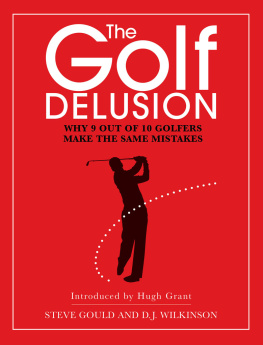
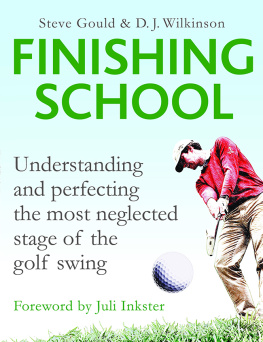
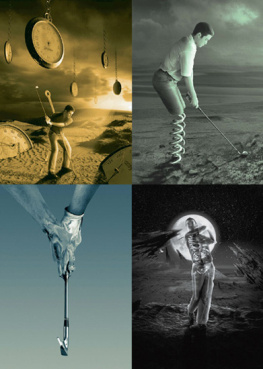
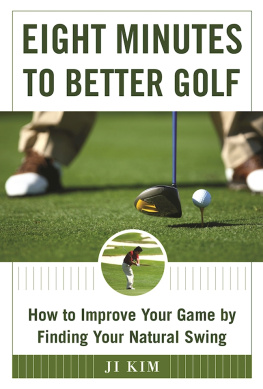
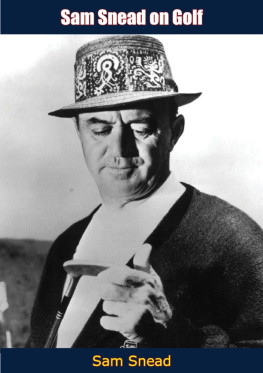
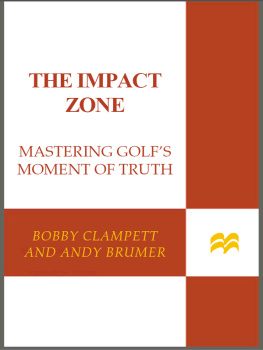
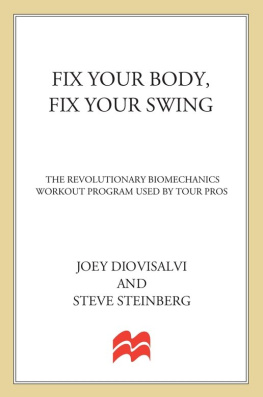
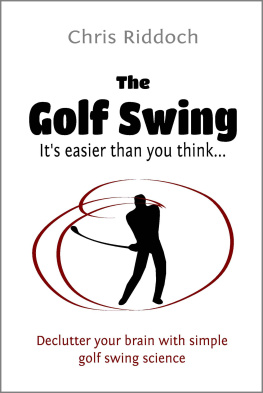
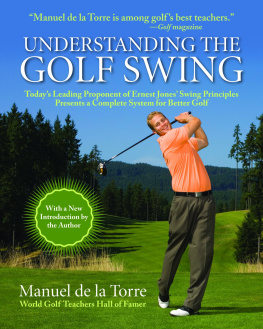
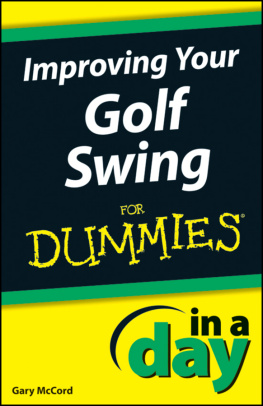
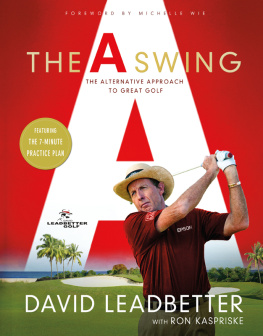

 The paper used in this publication meets the minimum requirements of American National Standard for Information SciencesPermanence of Paper for Printed Library Materials, ANSI/NISO Z39.48-1992.
The paper used in this publication meets the minimum requirements of American National Standard for Information SciencesPermanence of Paper for Printed Library Materials, ANSI/NISO Z39.48-1992.